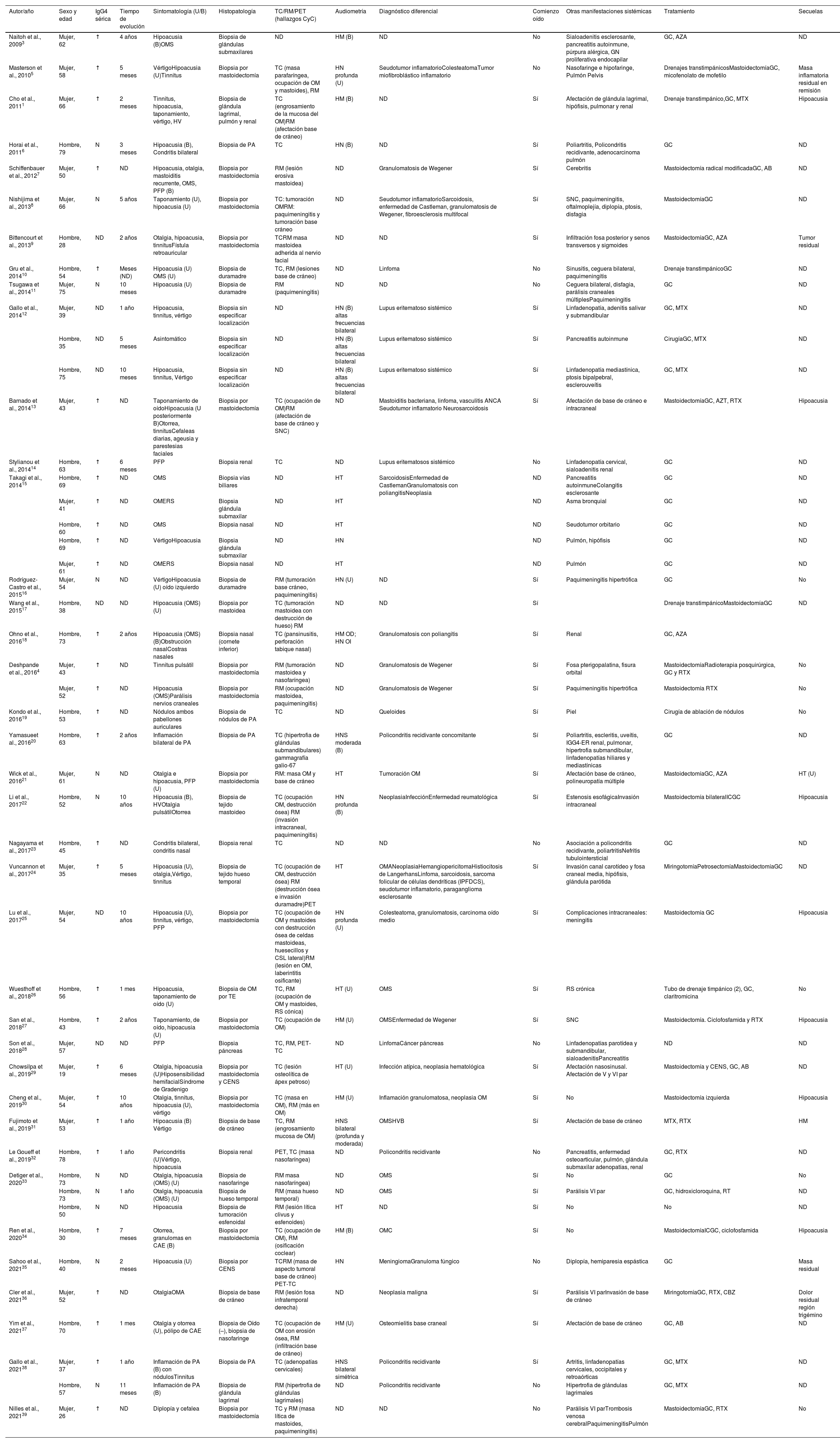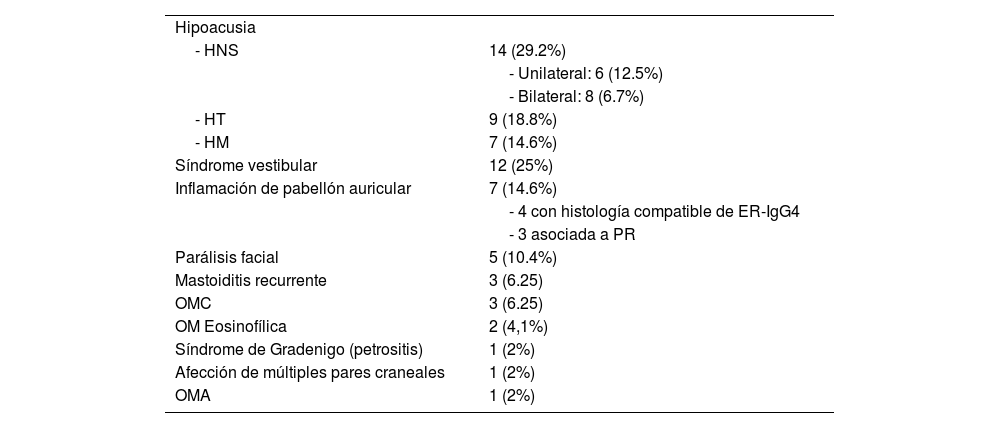La enfermedad relacionada con IgG4 (ER-IgG4) constituye un proceso fibroinflamatorio autoinmune sistémico caracterizado por la infiltración multiorgánica de células plasmáticas positivas para IgG4, fibrosis y vasculopatía que determinan la disfunción del órgano afectado. La presente revisión tiene por objetivo caracterizar las manifestaciones otológicas de la enfermedad.
Se realizó una revisión sistemática de la literatura biomédica publicada describiendo los casos de ER-IgG4 con manifestaciones otológicas. Para la búsqueda utilizamos las siguientes bases de datos: Pubmed, Web of Science y Scopus. Seleccionamos 48 casos de los que se extrajeron diferentes variables para caracterizar las manifestaciones otológicas de la misma.
Alrededor del 52% de los pacientes eran varones con edades comprendidas entre los 19 y los 79 años. La forma más habitual de presentación fue lesiones seudotumorales con presentación clínica similar a una otitis seromucosa, con lesión coclear asociada o una hipoacusia neurosensorial (uni o bilateral). Presentaciones menos frecuentes fueron un síndrome vertiginoso, condritis auricular, otitis eosinofílica o paquimeningitis hipertrófica con afectación cocleovestibular. En 32 pacientes (67%) la manifestación otológica constituyó la forma de presentación de la ER-IgG4.
Dieciséis pacientes (33%) fueron tratados mediante cirugías agresivas como consecuencia del retraso diagnóstico y el desconocimiento de esta entidad clínica. Dos pacientes precisaron un implante coclear.
Si bien las manifestaciones óticas de la ER-IgG4 son infrecuentes, es importante que el otorrinolaringólogo conozca las formas de presentación otológicas de esta entidad, ya que pueden ser la primera manifestación de la enfermedad, permitiendo un diagnóstico precoz y un tratamiento adecuado, evitando secuelas permanentes posteriores.
IgG4-related disease (IgG4-RD) is a systemic autoimmune fibroinflammatory disease characterized by multiorgan infiltration of IgG4-positive plasma cells, fibrosis and vasculopathy that determine dysfunction of the affected organ. This review aims to characterize the otologic manifestations of the disease.
We have conducted a systematic review of the biomedical literature published describing cases of IgG4-RD with otologic manifestations. For the review, the bibliographic databases utilized were Pubmed, Web of Science and Scopus. We selected 48 cases from which we extracted several data collections.
About 52% of the patients were male between the ages of 19 and 79 years. Otologic findings were characterized by pseudotumoral lesions that most often caused a clinical presentation similar to otitis media with effusion, with cochlear involvement or sensorineural hearing loss (uni or bilateral). Less frequent presentations included auricular chondritis, eosinophilic otitis, or hypertrophic pachymeningitis. In 32 patients (67%) the otologic manifestation was the first symptom of the ER-IgG4.
Sixteen patients (33%) were treated with mastoidectomies as a result of delayed diagnosis and lack of knowledge about this entity. Two patients needed a cochlear implant.
Although the otologic manifestations of IgG4-RD are unusual, it is important for the otorhinolaryngologist to know the otologic manifestations of this entity as it can be the onset of the disease, in order to allow early diagnosis and adequate treatment, avoiding permanent sequelae.








